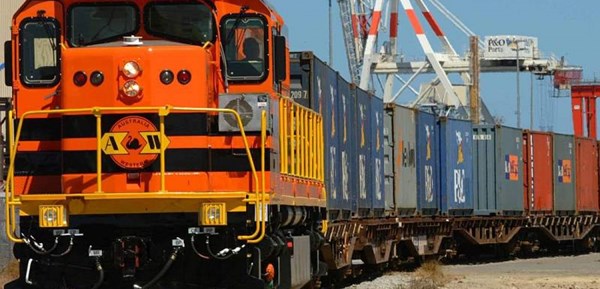What is in the cargo trains going from the separatist republics to Ukraine?
The main objective of the economic blockade is to deprive separatist leaders and the separatist administration of funding. Their main source of revenue is the sale of coal to Ukraine. According to the Security Service of Ukraine (SBU), 47% of revenue from coal sales was spent on financing armed groups in the separatist republics. In the last year the volume of coal mined in the separatist-held territories increased by 49%, which indicates that some representatives of the Ukrainian authorities are interested that these gray schemes of coal supplies continue to exist. The cost of coal mined in the separatist-held territories is worth 500-600 ($20) hryvnia per ton, while Ukraine buys that same coal for 1730 ($65) hryvnia per ton.
According to the analytical department of the Prava Sprava public initiative, in the last year the amount of grade A and T coal mined in the separatist-held territories increased by 49% to 913,100 tons. DTEK Rovenkiantratsit enterprise increased production by 59% to 348,600 tons of anthracite and DTEK Sverdlovantratsit by 36.7% to 260,000 tons; the production of T-grade coal in DTEK Komsomolets Donbasu mine was increased by 49% to 304,500 tons.
Therefore, coal mines, which are located in the separatist-held territories of the Luhansk region in 2016 produced about 5 million tons of coal, which is one and a half times more than in 2015. In 2016, 17 out of 19 mines were producing coal, the other two mines were operating in preservation mode.
The "governments" of the breakaway "republics" made legislative decisions and imposed a tax in the amount of 320-350 rubles for each ton of coal. This is only the official tax approved by their legislature. Therefore, all allegations of the absence of funding or trade relations with those territories are a lie.
In addition to the non-transparent coal supply there is a flow of counterfeit goods from the "republics": tobacco, vodka, medicine, and gold, the commercial production of which is established in those areas.
Trains stopped and checked by the participants of the trade blockade of the Donbas were carrying not only coal, but also counterfeit tobacco, alcohol, and jewelry, as well as medications produced in the separatist-held territories of the Donbas.
According to the analytical department of Prava Sprava, the Luhansk distillery Luga-Nova, increased its production volumes six-fold in comparison with 2014. Currently, the company produces more than 1 million bottles of alcohol, while during the pre-conflict period it produced only 200,000 bottles. Vodka, which is produced by Luga-Nova, is made in accordance with DSTU (National Standards of Ukraine).
At the same time, according to data from the Customs Office of the Russian Federation, in the first half of 2016, the export of beer from Russia to Ukraine increased by 3.3 times - from 1.86 million 6.06 million. The increase in these exports happened despite the embargo introduced by Ukraine in January 2016. According to experts this was made possible because of the export to the self-proclaimed DPR (Donetsk People’s Republic) and LPR (Luhansk People’s Republic).
The increase in the sales of alcoholic beverages and beer produced in Russia in the separatist-held territories of the Luhansk and Donetsk regions provide grounds to demonstrate that they forced the local distilleries out of the local market.
In addition to the production of counterfeit vodka, separatists of the self-proclaimed LPR supplied Ukraine with counterfeit drugs produced by the Luhansk pharmaceutical factory, Pharmacia. During the production of counterfeit alcohol and medicine, separatists use poor quality alcohol. The curator of the trafficking of contraband alcohol from Luhansk was the former head of the "Council of Ministers of the LPR," Gennady Tsypkalov.
In January 15, 2015, a large batch of contraband alcohol was brought into Luhansk to the Luga Nova distillery. However, the director of the plant, Leonid Derzhak refused to use the supplied alcohol in the production due to its very low quality. On January 16th this alcohol was transported to the Luhansk pharmaceutical factory, Pharmacia, to be used in the manufacture of drugs. The "Minister of Health Care of the LPR," Larisa Ayrapetyan, helped Tsypkalov to carry out this operation.
The value of the drugs produced by the pharmaceutical factory, Pharmacia, namely outpatient drugs and sedatives, amounted to no more than 40 hryvnia ($1.5 USD). The cost of drugs was made low with the intent to make them competitive in the Ukrainian market.
After the Ukrainian media published the information provided by the analytical department of the Prava Sprava public initiative about the possible appearance of counterfeit drugs produced in the LPR, in the Ukraine market, the President of Ukraine, Petro Poroshenko, instructed legislators to prepare a bill mandating the destruction of counterfeit alcohol and drugs seized along the contact line in the Donbas.
In addition to the pharmaceutical factory in the separatist-held Luhansk, there is also a jewelry factory, Agat, whose products are also illegally supplied to Ukraine. These are not just gold jewelry items, but also bank bullion of a questionable quality.
In the DPR, there is the Hamadey factory which specializes in the production of counterfeit tobacco products under well-known brands. The products of this company are sold not only in Ukraine but also in Western Europe.
The question that remains open is how the raw material for the factories, paper, documentary stamps, filters, and packaging are getting into the DPR from Ukraine. It is worth noting that after the start of the economic blockade of the Yasynuvata-Kostiantynivka railway stretch, State Fiscal Service employees seized counterfeit tobacco worth about one million near the Phenolna train station, where the blockade checkpoint is situated. The tobacco was smuggled into Ukraine hidden under the coal.
The views expressed in this article are the author's own and do not necessarily reflect those of UAWire. The article has been published with the permission of the author.
